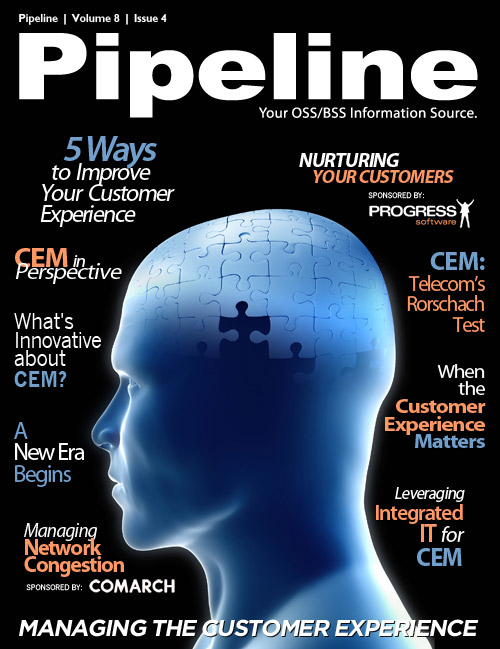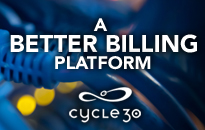Nurturing Your Customers
The potential payoff from improved operations is huge. Consider,
for example, BT’s well-known Right First Time program. In this
initiative, BT tracks the way it handles new business customers
from first call to 30 days after the first bill. It evaluates virtually
every operations activity, looking for ways to improve. This laserlike
focus on processes and their interactions yielded a 33 percent
reduction in customer complaints and allowed the company to
re-direct large numbers of employees away from constant billing
inquiry and error investigation. Cost reductions and happier
customers are making this endeavor a model for other CSPs.
Source: Yankee Group
Source: Yankee Group
Cultural Transformation and Operational Evolution
Historically, the process was to talk to the customer at point of sales and then it was “hands-off” until something went wrong. Today, customers are looking to their service providers to be a valuable, trusted, and ongoing advisor in the rapidly changing communications environment. To do this, service providers must first understand the customer lifecycle and then leverage their unique CCI to continually renew their customers’ interest. This means, they must shift from being an engineering- or network-driven service company to a customer-driven service provider; and that’s a profound shift from the days of old.
We should also all know by now that a Siloed approach doesn’t work for today’s converged world. But, no major service provider can afford or fathom to replace their existing systems. So, how can services providers leverage their existing infrastructure to gain an intimate, dynamic, and real-time understanding of their customer to create a healthy, positive relationship? The answer lies in leveraging and integrating OSS and BSS to mine customer information from disparate and often disconnected systems. Service providers must look for methods that combine the strength of their existing infrastructure, systems, and CCI to create a complete and dynamic customer profile and use that profile to eliminate negative customer interactions and provide more positive customer touch-points throughout the lifecycle of the customer.
The world of experience possibilities is virtually endless. By implementing a concerted CEM strategy using an integrated approach to OSS and BSS architecture that leverages existing systems, service providers have the opportunity to completely transform their customer’s experience. They can remove the negative and annoying aspects of the customer experience by better understanding and improving their customer interactions. They can create new services based on their unique understanding of their customer. And, they can create a completely unique customer experience by using their CCI to create innovative, one-of-a-kind service experiences.
To do this, service providers need OSS and BSS that can leverage current systems and mine customer information from their existing network, systems, and data repositories and create a complete and dynamic view of the customer, their lifecycle, and every customer interaction. OSS and BSS systems should give service providers centralized access to these systems so that they can leverage the collective strength of data, such as:
- Call and Usage Patterns: suggestive selling based on a better understanding of customer’s needs
- Individual Interests: understanding your customer’s proclivities so that you can create positive points of interactions around their specific areas of interest
- Device Capabilities: educating customers to take full advantage of device capabilities and notifying them of new service and application opportunities
- Social Networks: integrating social networks with traditional services to create unique, new service offerings
- Service Plans: correlating service plans with service usage so that customers are getting the best service at the best price – and are being accurately billed for them.
- Billing Information: streamlining the order process to make it as easy as possible for customers to purchase new services, devices, and applications
- General Preferences: centralizing customer information and preferences in a central repository to remove the redundant need for the customer to enter and re-enter the same information every time they interact with their service provider.
- Location: combining location with events, social networks, active service alerts, and notifications
With proactive CEM across the entire customer lifecycle, everybody wins. Customers benefit from a positive, consistent, unique, and continually renewed service experience. Service providers benefit from increased customer loyalty and trust, increased average revenue per unit (ARPU) and by reducing customer churn by creating a culture to which customers want to belong.
About Progress Software Corporation
Many of the worlds’ leading communication companies use Progress communications solutions, including Alcatel-Lucent, Belgacom, Cablevision, China Mobile, Frontier Communications, H3G – 3 Italia, Huawei, Level3, NEC Corporation, NTT Group, Orange UK, One.Tel HK, Portugal Telecom, Qwest, Sprint, Telecom Italia, Verizon, and many more.
Progress Software Corporation (NASDAQ: PRGS) is an independent enterprise software company that enables businesses to be operationally responsive to changing conditions and customer interactions as they occur – to capitalize on new opportunities, drive greater efficiencies and reduce risk. The company offers a comprehensive portfolio of best-in-class enterprise software spanning event-driven visibility and real-time response, open integration, data access and integration, and application development and deployment – all supporting on-premises and SaaS/Cloud deployments. Progress maximizes the benefits of operational responsiveness while minimizing IT complexity and total cost of ownership. Progress can be reached at www.progress.com or +1-781-280-4000.











